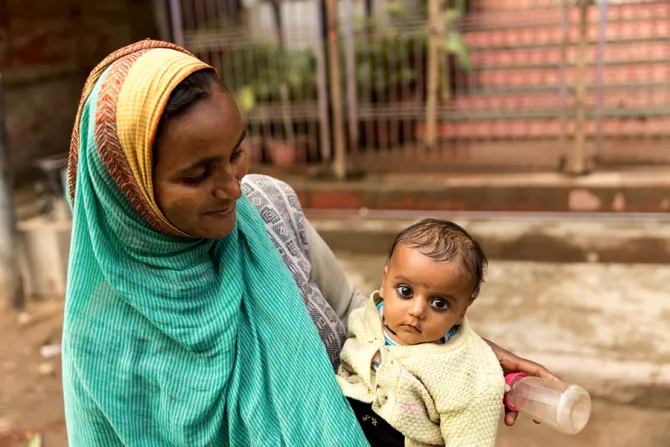Washington, D.C., Jan 30, 2018 / 14:09 pm
Catholic organizations applauded the U.S. Department of Homeland Security's Jan. 29 announcement that it is lifting the ban on refugees from 11 high-risk countries, with the condition of additional security screening for new arrivals.
"We were happy to see that that processing is resuming," said Matthew Wilch, refugee policy advisor for the U.S. Conference of Catholic Bishops.
"We look forward to welcoming refugees and, of course, we very strongly agree that it is important that the refugee program be safe and have a strong vetting procedure," Wilch told CNA.
After passing through an enhanced vetting process implemented during a 90-day review period, individuals from countries that are deemed to pose a heightened security threat may now be offered asylum in the U.S.
"These additional security measures will make it harder for bad actors to exploit our refugee program, and they will ensure we take a more risk-based approach to protecting the homeland," said Homeland Security Secretary Kirstjen M. Nielsen on Jan. 29.
Following a temporary ban on all refugees worldwide, President Donald Trump ordered the U.S. Refugee Admission Program to begin accepting new refugees again in October 2017, with the exception of 11 countries deemed to be high-risk, who would be restricted for a 90-day review period.
Although officials did not release which countries were temporarily prohibited, aid agencies and media outlets have reported them to be Egypt, Iran, Iraq, Libya, Mali, North Korea, Somalia, South Sudan, Sudan, Syria and Yemen – a list of high-risk countries dating back to the Obama administration.
One of the new security procedures called for by the DHS is "a periodic review and update of the refugee high-risk country list and selection criteria," according to a Jan. 29 press release.
"In 2017, the President directed us to assess the program and make any needed changes. As a result of that review, and in close coordination with the State Department and our intelligence community, we will be rolling out new security measures for applicants from high risk countries which will seek to prevent the program from being exploited by terrorists, criminals and fraudsters," Secretary Nielsen explained at an event at the Woodrow Wilson Center on Jan. 29 before the announcement.
Catholic Relief Services' vice president for government relations and advocacy Bill O'Keefe said that his organization is "pleased to see the Administration is now accepting refugees from countries that were previously banned from entering the United States."
"We hope now that the Administration will raise the refugee limit and allow more of our brothers and sisters into this country so that we can do our part to give them a safe and secure future," he told CNA.
The Trump administration lowered the cap on refugee admissions from 110,000 down to 45,000 for the year that started in October 2017.
"As Pope Francis has said, it's important for us to share the journey with the displaced, and this is one way we can welcome them into our homes and communities," O'Keefe said.
For Catholics who would like to volunteer with incoming refugees, Wilch recommends a Catholic program called Parishes Organized to Welcome Refugees.
"It is a really good example of how Catholics come together to welcome people who are fleeing these situations and seeking protection," he said.



